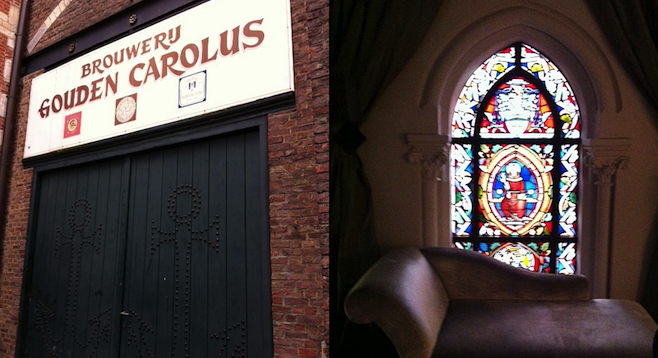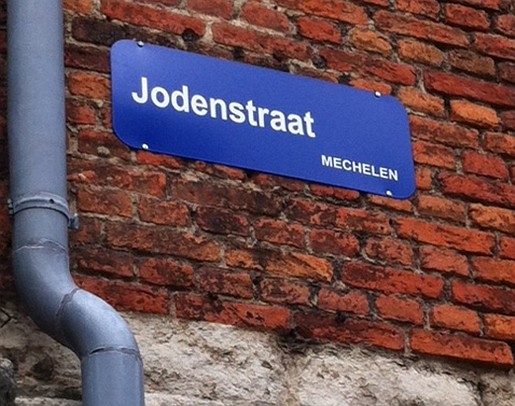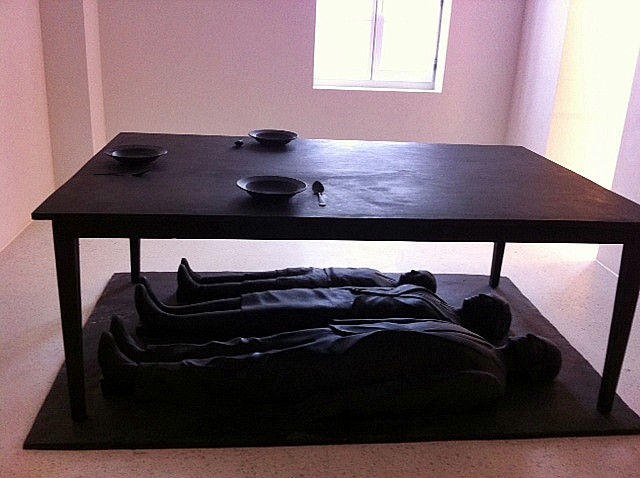 Facebook
Facebook
 X
X
 Instagram
Instagram
 TikTok
TikTok
 Youtube
Youtube

In Mechelen – pronounced with a guttural "ch" – religion has played a tremendous role for over 800 years. The city's provided shelter, freedom for women, even beer...and it’s also served as a dark double-edged sword in the course of human history.
Once you learn about its past, it may not be a rah-rah fun getaway, but it’s fascinating, thought provoking and meaningful.
Where to stay. A sign that Europeans have become sanguine to religion is that many churches are being repurposed into all kinds of secular destinations. Martin’s Patershof is a former 19th-century Franciscan church that’s now luxury hotel. Many of the beautiful stained glass windows have been incorporated into the guest rooms, along with dark nooks and crannies good for contemplative moments or just checking email.
What to do. At the time of the Crusades in the 12th and 13th centuries, an order of beguines started to organize in Mechelen. Beguines were usually, but not always, women of great wealth who didn’t want to share their fortunes with a husband or join a convent. They were very pious, and thus eventually won the grudging support of the Church to live on their own terms. Many worked creating lace. The society lasted through the 20th century in town, with one last very elderly survivor.
There’s an ancient little hidden street within the historic city walls where you can see their homes, now owned by chic, successful professionals: Omgeving Nonnenstraat, 2800 Mechelen.
In 1471, Charles the Bold granted the beguinage the right to brew beer without paying taxes. The brewery was owned by the beguinage until 1865, until it was purchased by a lay family. It’s known as Het Anker and is still in the beguines’ neighborhood. You can visit the facilities, which now includes a distillery, brasserie with recipes incorporating beer and a hotel where their logo is “sleep between the sheets at the brewery.” (I first read it as “sleep between the sheet with the brewer,” which is something else altogether.)

The Dossin Barracks had nothing to do with religion for centuries: they were soldiers’ barracks going back to the Hapsburg Empire. Then, in 1942, they were used as the marshaling point for all the Jews and gypsies of Belgium and northern France – to be herded onto trains taking them directly to their murders at Auschwitz.

Shamefully, the barracks were allowed to be developed into “luxury apartments.” Sure enough, there are people cheerfully living there with little white Belgian lace curtains fluttering in the breeze. No government buy-back or eminent domain acquisition was ever made to protect this dark place in history. The lobby has a powerful memorial to the local Holocaust victims.
However, across the street – not in the barracks themselves – a moving museum has been built. Kazerne Dossin is beautifully organized; the increasing stages of oppression to the local Jews are divided between several floors. The progression is terrifying, but must-see.
The museum has an orientation film that explains some of the nature of prejudice. I’m usually ambivalent as to such films; they come off preachy and seem to minimize the Holocaust as being just another atrocity amongst the course of human events. However, Kazerne Dossin does their orientation film in such a thoughtful way as to show how the crowd mentality refutes that “it can never happen again.”


In Mechelen – pronounced with a guttural "ch" – religion has played a tremendous role for over 800 years. The city's provided shelter, freedom for women, even beer...and it’s also served as a dark double-edged sword in the course of human history.
Once you learn about its past, it may not be a rah-rah fun getaway, but it’s fascinating, thought provoking and meaningful.
Where to stay. A sign that Europeans have become sanguine to religion is that many churches are being repurposed into all kinds of secular destinations. Martin’s Patershof is a former 19th-century Franciscan church that’s now luxury hotel. Many of the beautiful stained glass windows have been incorporated into the guest rooms, along with dark nooks and crannies good for contemplative moments or just checking email.
What to do. At the time of the Crusades in the 12th and 13th centuries, an order of beguines started to organize in Mechelen. Beguines were usually, but not always, women of great wealth who didn’t want to share their fortunes with a husband or join a convent. They were very pious, and thus eventually won the grudging support of the Church to live on their own terms. Many worked creating lace. The society lasted through the 20th century in town, with one last very elderly survivor.
There’s an ancient little hidden street within the historic city walls where you can see their homes, now owned by chic, successful professionals: Omgeving Nonnenstraat, 2800 Mechelen.
In 1471, Charles the Bold granted the beguinage the right to brew beer without paying taxes. The brewery was owned by the beguinage until 1865, until it was purchased by a lay family. It’s known as Het Anker and is still in the beguines’ neighborhood. You can visit the facilities, which now includes a distillery, brasserie with recipes incorporating beer and a hotel where their logo is “sleep between the sheets at the brewery.” (I first read it as “sleep between the sheet with the brewer,” which is something else altogether.)

The Dossin Barracks had nothing to do with religion for centuries: they were soldiers’ barracks going back to the Hapsburg Empire. Then, in 1942, they were used as the marshaling point for all the Jews and gypsies of Belgium and northern France – to be herded onto trains taking them directly to their murders at Auschwitz.

Shamefully, the barracks were allowed to be developed into “luxury apartments.” Sure enough, there are people cheerfully living there with little white Belgian lace curtains fluttering in the breeze. No government buy-back or eminent domain acquisition was ever made to protect this dark place in history. The lobby has a powerful memorial to the local Holocaust victims.
However, across the street – not in the barracks themselves – a moving museum has been built. Kazerne Dossin is beautifully organized; the increasing stages of oppression to the local Jews are divided between several floors. The progression is terrifying, but must-see.
The museum has an orientation film that explains some of the nature of prejudice. I’m usually ambivalent as to such films; they come off preachy and seem to minimize the Holocaust as being just another atrocity amongst the course of human events. However, Kazerne Dossin does their orientation film in such a thoughtful way as to show how the crowd mentality refutes that “it can never happen again.”
Comments